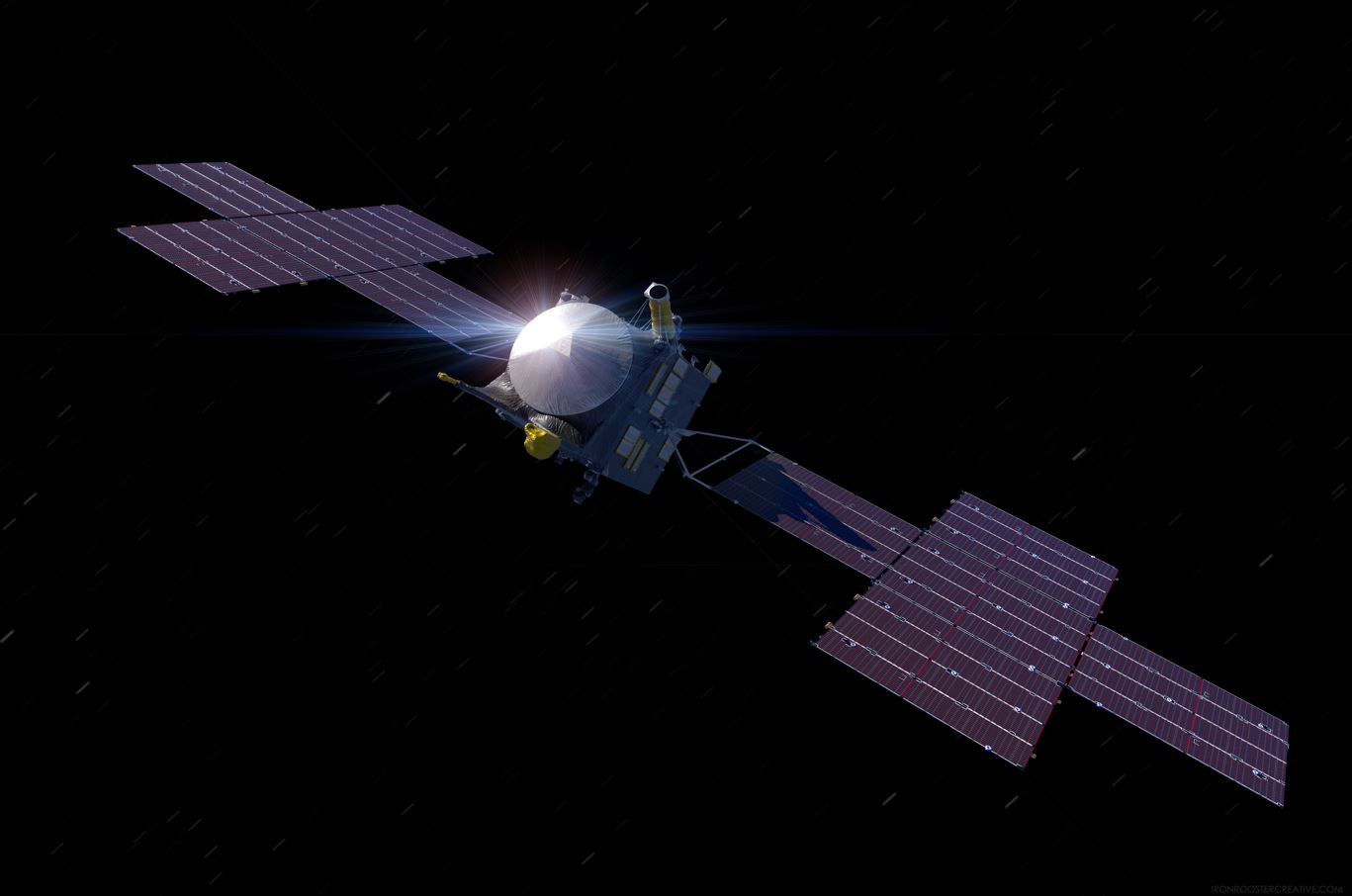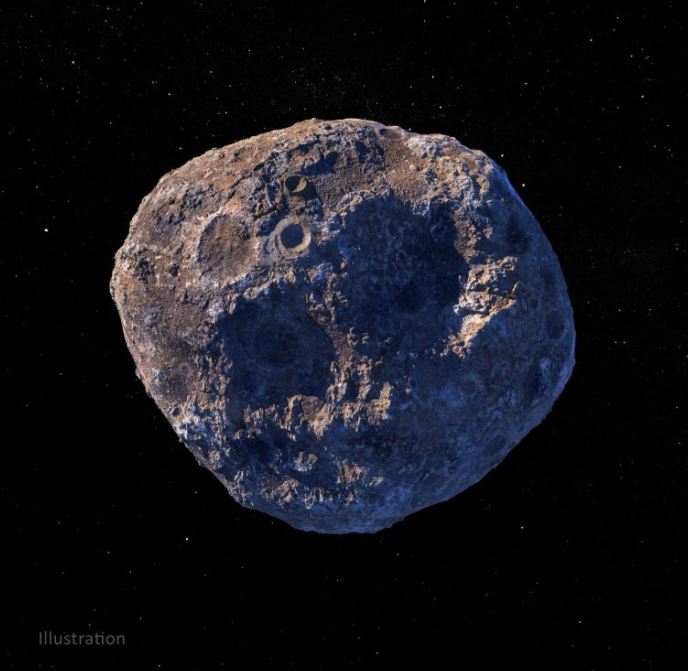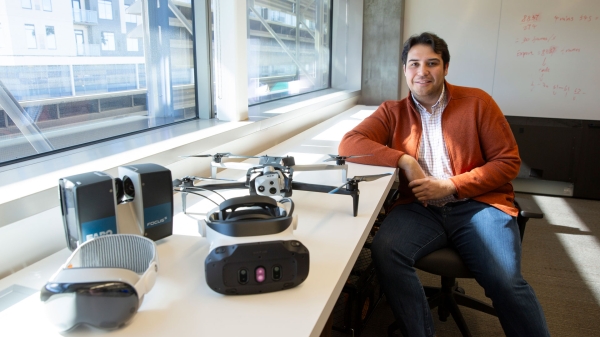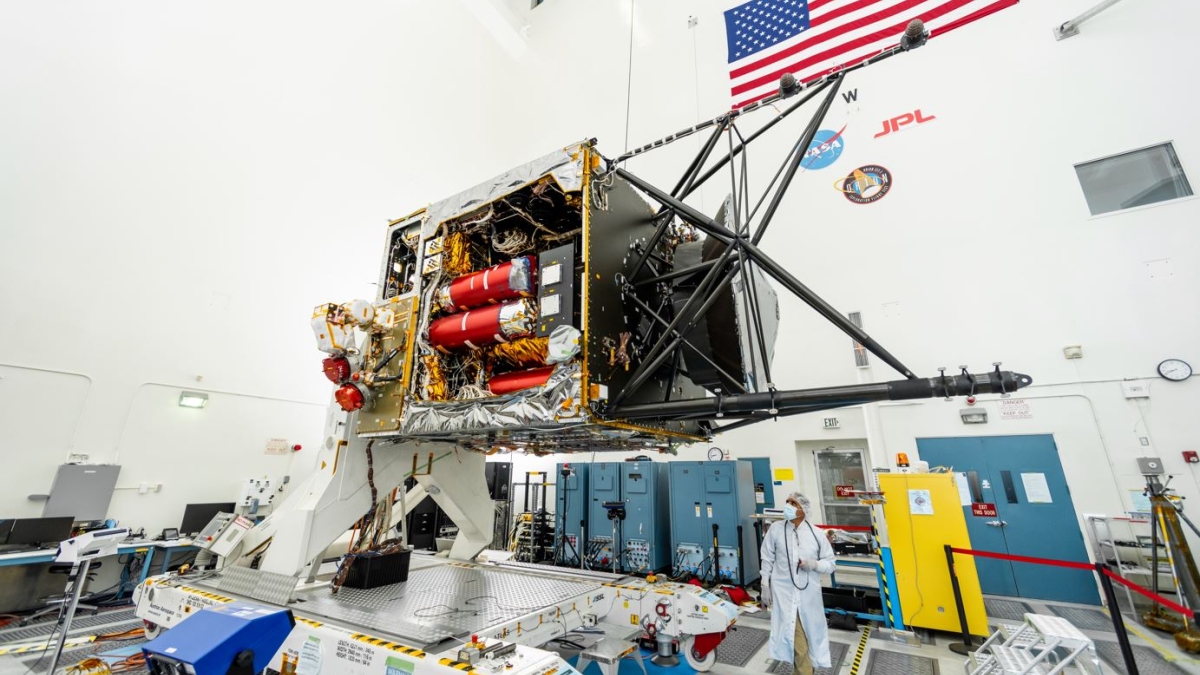Editor's note: On June 24, 2022, NASA announced that the Psyche mission will not make its planned 2022 launch attempt due to the need for more time to ensure that the spacecraft’s flight software and testing equipment will function properly in flight. A new launch period has since been announced: Oct. 5-25, 2023.
The anticipation is building for the Arizona State University-led NASA Psyche mission team, as the countdown clock now displays the mission’s launch as less than 365 days away. This mission, which was selected for NASA’s Discovery Program in 2017, will launch from Cape Canaveral, Florida, in a launch period opening Aug. 1, 2022.
The principal investigator of the Psyche mission is ASU Professor and planetary scientist Lindy Elkins-Tanton of the School of Earth and Space Exploration and the Interplanetary Initiative. She is leading the mission team on a journey to a metal-rich asteroid, called Psyche, that offers a unique window into the building blocks of planet formation.
“It's incredible to be at this point now, with a big spacecraft coming together, and one year until launch,” Elkins-Tanton said. “Like everyone in the world, our team has faced many challenges of the COVID pandemic, and we are putting in maximum effort to make it to the finish line. I'm so proud of this incredible group of people!”
The asteroid Psyche orbits the sun between Mars and Jupiter and is likely made largely of nickel-iron metal. The mission team will investigate whether Psyche is the core of an early planet, how old it is, whether it formed in similar ways to the Earth's core and what its surface is like. As such, it may provide a unique look into the violent collisions that created Earth and the terrestrial planets.
The spacecraft's instrument payload includes a magnetometer, a multispectral imager, and a gamma ray and neutron spectrometer. The mission will also test a sophisticated new laser communications technology, called Deep Space Optical Communications.

An illustration of the Psyche spacecraft. Maxar Technologies built the main body of the spacecraft, called the Solar Electric Propulsion Chassis. Credit: NASA/JPL-Caltech/ASU
Hundreds of people work on the Psyche mission, from scientists and engineers, to artists and outreach specialists. NASA’s Jet Propulsion Laboratory is responsible for the mission’s overall management, system engineering, integration and test, and mission operations. Maxar Technologies has provided the high-power solar electric propulsion spacecraft chassis.
At ASU, in addition to Elkins-Tanton, the team leads include Deputy Principal Investigator Jim Bell and mission co-investigators Cassie Bowman and David Williams. They in turn lead dozens of ASU researchers, engineers, graduate students and undergraduate students who work on various aspects of the mission.
In addition to serving as deputy principal investigator for the mission, Bell is the principal investigator of the spacecraft’s multispectral imager, with deputy lead Williams. This instrument consists of a pair of identical cameras designed to acquire geologic, compositional and topographic data of the asteroid and will provide mission-critical optical navigation.

An artist’s rendition of the Psyche asteroid by Peter Rubin. Credit: NASA/JPL-Caltech/ASU
Co-investigator Bowman leads the student collaboration efforts of the mission. This includes a nationwide undergraduate student artist program called Psyche Inspired and a nationwide undergraduate student capstone program. There is also a suite of free online courses, available to everyone, based on the real-world challenges and skills associated with the Psyche mission’s science, engineering, technology and teamwork.
The spacecraft is currently in the phase known as assembly, test and launch operations at NASA’s Jet Propulsion Laboratory (JPL). During the months ahead, the spacecraft will finish assembly and undergo rigorous checkout and testing before it’s shipped to NASA’s Kennedy Space Center in Cape Canaveral, Florida, for launch on a SpaceX Falcon Heavy rocket to the asteroid belt.
The final assembly of the Psyche spacecraft has begun at NASA's Jet Propulsion Laboratory. Credit: ASA-JPL/Caltech
After the planned launch in August 2022, the spacecraft will travel to the asteroid Psyche using solar-electric (low-thrust) propulsion. After flying by Mars in 2023 for a gravity assist, the spacecraft will arrive at Psyche in 2026 and spend 21 months orbiting the asteroid, mapping it and studying its properties.
And for the first time ever, with the efforts of hundreds of people, over the span of a decade, we will have the opportunity to investigate a previously unexplored type of world — and everyone is invited to join the journey.
Top photo: The Psyche spacecraft at NASA’s Jet Propulsion Laboratory. The spacecraft is in the phase known as assembly, test and launch operations. Credit: NASA/JPL-Caltech
More Science and technology

Teaching construction realities with virtual environments
Visiting a construction site is a valuable learning opportunity for students who want to one day work in the industry. Experiencing the sights, sounds and other sensory elements of an active…
ASU, Mexico partner to build next generation of chipmakers, drive semiconductor innovation
Thousands of college students in Mexico will soon have the opportunity to enroll in Arizona State University’s new, free online course to learn the fundamentals of microelectronics and…

ASU, St. Mary’s Food Bank partner to tackle food insecurity in Arizona
Arizona State University and St. Mary’s Food Bank (SMFB) have joined forces to create an interactive data dashboard that tracks and maps food insecurity rates across Arizona. This innovative tool…
